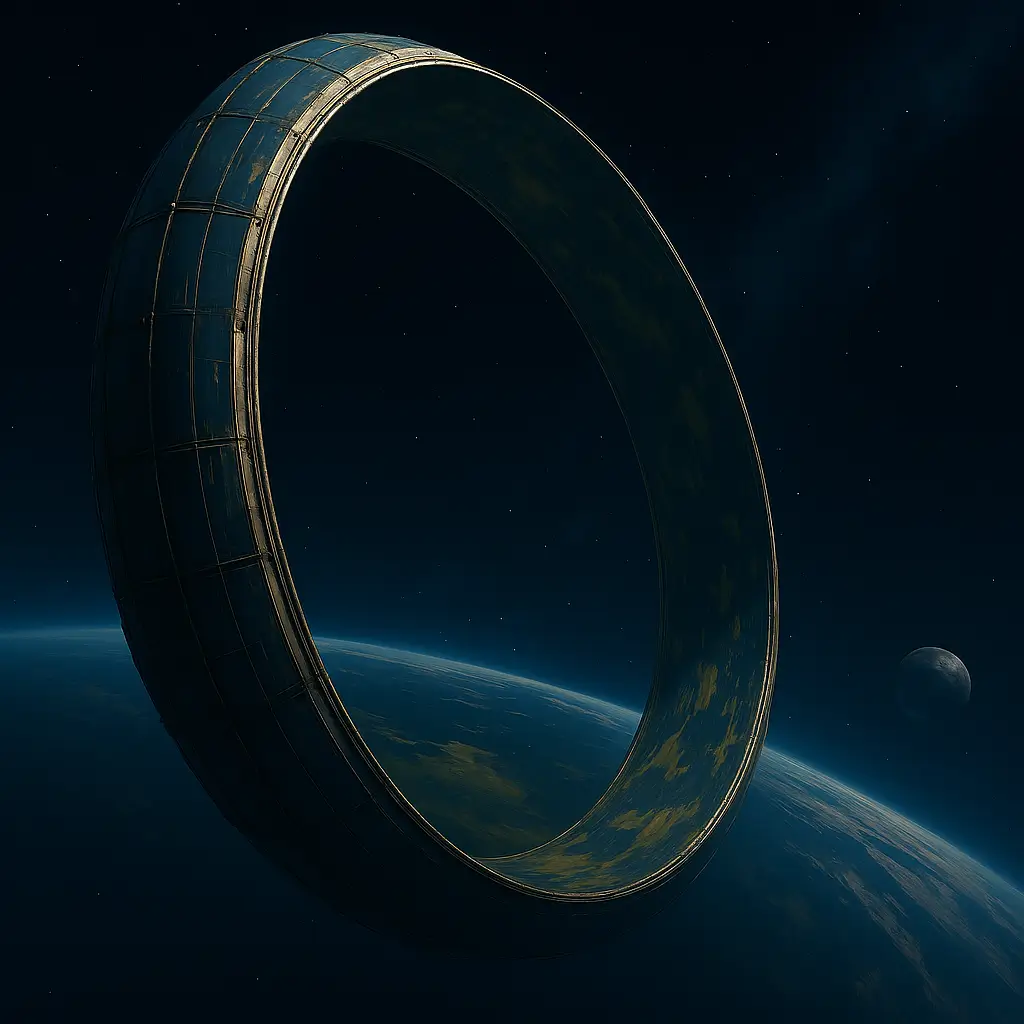Have you ever pondered a universe where planets might not just be spheres but donuts? Imagine vast celestial bodies shaped like the pastries in your morning basket, spinning around their stars. And of course, is our world really Donut Earth? Let’s embark on a thought-provoking exploration into the world of toroidal planets, a concept that stretches our imagination and challenges our understanding of planetary physics.
Toroidal planets, often described as donut-shaped celestial bodies, represent a theoretical class of astronomical objects that intrigue scientists and sci-fi enthusiasts alike. Unlike the spherical planets in our solar system, these planets would have a hole in their center, resembling a torus. This idea, while highly speculative and not observed in reality, provides a fascinating glimpse into how diverse planets could potentially be.
The concept of a toroidal planet raises numerous questions about its formation, stability, and environment. Physicists theorize that such a shape could theoretically exist under specific conditions, involving precise balances of gravitational forces and rotational speeds. However, creating and maintaining such a balance would be extraordinarily complex, as the dynamics of a toroidal planet would differ vastly from those of spherical bodies.

One might wonder, how would life adapt to a world with such an unusual topology? The climate and weather patterns on a toroidal planet would be radically different from Earth. The presence of a central hole could significantly affect light distribution and atmospheric circulation, creating unique temperature zones and perhaps even distinct ecosystems along the inner and outer surfaces.
Moreover, the gravitational forces on a toroidal planet would not be uniform. The inhabitants of such a world, if possible, would experience varying gravity depending on whether they were near the center or the outer rim of the torus. These variations could lead to bizarre natural phenomena and potentially habitable conditions that are difficult to predict with our current understanding of physics.

The fascination with toroidal shapes extends beyond theoretical planets to space habitats and spacecrafts. Inspired by the idea of toroidal planets, concepts like the Bishop Ring represent a type of space habitat that could support human life. Envisioned as a gigantic toroidal structure, a Bishop Ring could rotate to create artificial gravity through centrifugal force, housing thousands or even millions of people in a space-faring society.
The potential for donut-shaped spacecraft also taps into this intriguing geometry. Such designs could theoretically provide benefits in terms of space distribution and efficiency, especially in creating artificial gravity environments for long-term missions. The idea pushes engineers and scientists to rethink what is possible in spacecraft design, using nature’s geometries to inspire futuristic technology.
The theories surrounding toroidal planets and related structures invite us to think outside the traditional confines of astronomy and planetary science. They challenge our understanding of natural laws and inspire us to imagine the myriad forms life and planets can take across the universe.
Now, on to the most important question:
Bad news first: the Donut Earth theory first appeared on FlatEarthSociety.org in a 2008 thread started by someone under the handle Dr. Rosenpenis, and it was clearly presented as a joke by the author. Rosenpenis presented the theory as a literal donut. Sprinkles and jelly all.
“… what geologists have long believed to be molten minerals is actually jelly that is found beneath the sugary surface of the continental plates and the doughy crust.”
That out of the way, after some back and forth discussion on the topic, some real ideas on how it would work were presented and theorized in the thread.
Proponents of the toroidal Earth theory often point to specific, unusual observations of Earth’s gravity field, which they claim could indicate irregularities that fit a donut-shaped model rather than a spherical one. For instance, they argue that if Earth were a torus, the variations in gravitational strength at different points could help explain why certain regions of the planet exhibit gravitational anomalies. These anomalies are typically attributed to factors like uneven mass distribution within Earth’s crust and mantle in mainstream science.
In the 2008 thread, a member named Varaug even presented a FAQ to the theory that answers this question.
“Light bends and follows the curvature of the torus, making the hole “unseeable”.”
So Einstein’s relativity is to blame for the invisible hole (or is it holes?).
Imagine the bizarre and fascinating implications for climate, gravity, and day-to-day life from a donut-shaped Earth. A toroidal Earth would have a completely different system of solar illumination and weather patterns. The regions around the inner rim might experience perpetual twilight, while the outer rim could bask in the full strength of the sun.
Gravitational forces would be weaker in the inner and outer curvature, potentially leading to strange phenomena like mega-oceans held in place by gravity stronger at the poles than at the equator. Navigation would be a nightmare—compasses designed for a spherical Earth would be all but useless, and GPS systems would need a serious overhaul.
Unfortunately for the FlatEarthSociety thread, there’s not much that is convincing about the theory that matches any observed reality. The physics of planet formation favor spherical shapes due to gravity’s uniform pull. Additionally, a toroidal planet would face numerous challenges regarding stability and integrity under its own gravitational stresses, making it a highly unlikely natural occurrence. But it is fun to imagine.
Today, a real toroidal planet still remains a hypothetical, and no real explanation for how one would form has been postulated yet, it still remains possible, at least according to Wikipedia.
While the donut-shaped Earth is purely speculative, the theory opens up a delightful playground for the imagination. It serves as a testament to human creativity and our ability to explore endless possibilities in theoretical astrophysics. Delving into such unconventional ideas can spark interest in real-world science and encourage people to learn more about the cosmos.
So, next time you enjoy a donut, take a moment to dream about a universe where planets are shaped like your snack. It’s a whimsical thought, but who knows? In the vast expanse of the cosmos, perhaps there’s a donut-shaped world waiting to be discovered.
No filler. Just the good stuff, glazed with care.
No filler. Just the good stuff, glazed with care.